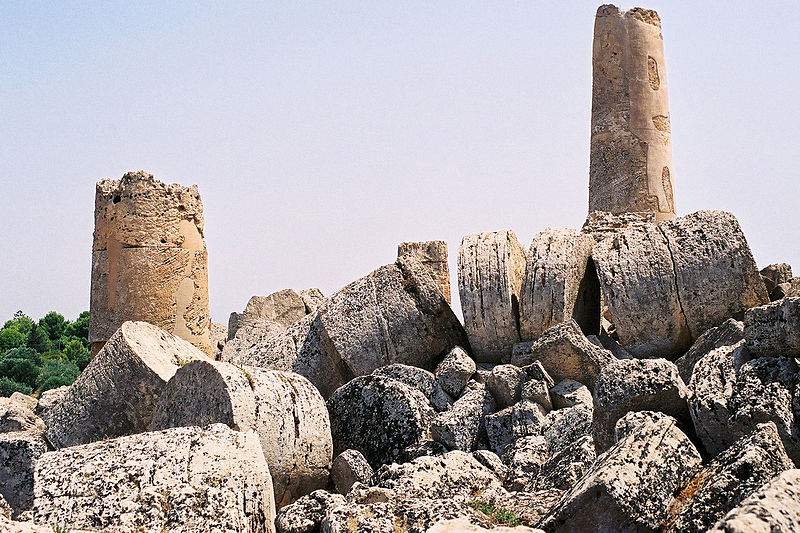At the proposal of the councillor for Cultural Heritage and Sicilian Identity, Alberto Samonà, the outgoing regional government, with funding of 5 million euros, has long since approved the "Project for the Enhancement of the Archaeological Park of Selinunte," which includes a major study and restoration work. By the end of 2022, the Sicilian Region will issue the tender to kick off the large construction site, aimed at acquiring new data and knowledge about the Selinuntine temple, the restoration and recomposition of some parts, including the three gigantic columns of the southern side (whose structural elements have been identified with certainty), which will be relocated with their capitals. Also to be recovered will be the so-called"Fuso della Vecchia," the column restored in 1832 by sculptor Valerio Villareale, commissioned by the Duke of Serradifalco. The recomposition of Temple G had been advocated at the time by Sebastiano Tusa before he became alderman, as archaeologist and superintendent of the sea. Vittorio Sgarbi had also announced his intention to rebuild Temple G as early as 2018.
The grand plan, then, is to restore Temple G in Selinunte to its majesty: the temple dates back to the fifth century B.C., is a full 109 meters long and 50 meters wide; each column was over 16 meters high and the entire building reached about 30 meters. The construction lasted several decades and its elements were never finished, but it was complete in its architectural structure and in use. Probably due to natural events, the temple collapsed.
“It will be a great construction site of knowledge,” commented Alberto Samonà, “because it will let the whole world discover the majesty of this sacred building, considered one of the greatest of classical antiquity. The relocation of the three great columns is a cultural operation of international scope, the calling card of a Sicily that looks to the future in the name of its history and cultural identity, and of a Mediterranean and cosmopolitan vision, which aims to restore centrality to the island. A dream come true that will allow everyone to realize what this great temple of antiquity was. A project that will draw the world’s attention to Selinunte, with inevitable repercussions on the number of visitors who will want to discover the archaeological park in the future.”
For more than a year the staff has been working at the impetus of Councillor Alberto Samonà and with the full support of President Musumeci; the technical coordination has been entrusted to the Department of Cultural Heritage of the Sicilian Region, with the general manager Franco Fazio, the manager in charge of the Planning Service, Carmelo Bennardo, and the director of the Selinunte Archaeological Park, Felice Crescente.
"The project began in 2010, thanks to investigations directed by Mario Luni of the University of Urbino, promoted by Valerio Massimo Manfredi," explained archaeologist Oscar Mei. "Researches that resumed under my direction in agreement with the Park of Selinunte, at the invitation of Councillor Sebastiano Tusa, and led to the acquisition of data on the construction of Temple G. New investigations will be able to lead to the recomposition of three columns of the south side of the Temple, whose structural elements, now collapsed with the interior of the building, have been identified with certainty and are almost complete up to the capital. This project phase is of enormous importance for the enhancement and enjoyment of the Temple and will be decisive for its preservation and protection. We are also working on an advisory committee of which Luigi Malnati, former Director General Antiquities of MIBACT, will be a member. We should certainly remember the scholars and friends, now deceased, who devoted so much time and energy to Temple G over the past twelve years: Sebastiano Tusa, Mario Luni and Gastone Buttarini, restorer and designer from Urbino."
Preliminary investigations are already underway, and three-dimensional scans of Temple G have also begun, allowing the virtual reconstruction of a sketch of the monument. Archival, bibliographic, and iconographic surveys, the 3D photogrammetric and laser scanner survey, and the mapping of the materials with which it was built are planned.
The project will make it possible to follow its phases: a multimedia corner will be set up and a virtual reconstruction of the Temple, also explained through a comic strip on the construction techniques of classical monuments, will be projected with a film.
Image: the ruins of Temple G in Selinunte. Ph. Credit
 |
| Selinunte, three giant columns of Temple G will be reassembled and relocated. The large construction site will start |
Warning: the translation into English of the original Italian article was created using automatic tools. We undertake to review all articles, but we do not guarantee the total absence of inaccuracies in the translation due to the program. You can find the original by clicking on the ITA button. If you find any mistake,please contact us.